If you’re considering getting a pet frog, it’s important to understand how long do pet frogs live. The lifespan of a pet frog can vary depending on the species and the level of care they receive. By providing the right environment, nutrition, and attention, you can ensure that your frog lives a long and healthy life.
On average, pet frogs live between 4 to 15 years, although some species can live even longer. Understanding the lifespan of pet frogs is crucial for responsible frog ownership. By knowing how long your frog is likely to live, you can better plan for their care and provide them with the best possible life.
Caring for pet frogs involves creating the ideal habitat, providing a suitable diet, and monitoring their health. Each of these aspects contributes to the overall well-being and longevity of your frog. Additionally, it’s important to choose a frog species that is suitable for beginners, as some species may have specific care requirements.
By taking the time to learn about the lifespan of pet frogs and implementing proper care practices, you can enjoy the companionship of these unique and fascinating creatures for many years to come.
Froggy Facts to Remember:
The Importance of Buying Captive-Bred Frogs
When it comes to purchasing a pet frog, it is essential to prioritize responsible frog ownership by buying captive-bred frogs. Not only does this ensure the well-being of the frogs themselves, but it also has significant implications for wildlife conservation and the preservation of amphibian populations.
Captive-bred frogs are frogs that have been bred in captivity rather than being captured from the wild. By supporting this practice, you contribute to the protection of wild frog populations and help combat the amphibian extinction crisis.
One of the main reasons why buying captive-bred frogs is so crucial is because it helps prevent the spread of diseases. The pet trade, if not regulated properly, can facilitate the transmission of diseases such as the devastating Chytrid fungus, which has been a major contributor to amphibian declines worldwide.
“By purchasing captive-bred frogs, you play an active role in reducing the risk of introducing diseases into the fragile ecosystems where they belong.”
Choosing captive-bred frogs also supports local breeders and sustainable practices within the pet frog trade. By buying from reputable breeders, you can ensure that the frogs have been raised under optimal conditions, are healthy, and have been properly cared for.
Additionally, responsible frog ownership involves avoiding the purchase of wild-caught frogs. The capture and trade of wild frogs not only disrupts natural ecosystems but also can have detrimental effects on already vulnerable populations.

Join Our GeoZoo Family
Subscribe to our Newsletter
“By opting for captive-bred frogs, you actively contribute to the conservation of wild frog populations and the protection of their natural habitats.”
Ultimately, buying captive-bred frogs is a responsible choice that aligns with the principles of ethical pet ownership and environmental stewardship. It allows you to enjoy the companionship of these fascinating creatures while making a positive impact on their conservation.
Creating the Ideal Habitat for Your Pet Frog
Setting up an appropriate habitat is essential for the well-being of your pet frog. The tank should be suitable for the specific species, whether it is aquatic, terrestrial, arboreal, or semi-aquatic.
When designing your pet frog enclosure, consider the following factors:
- The tank size: The tank size should accommodate the frog’s size and number, with a minimum of 10 gallons for most species and larger tanks for bigger frogs. Providing enough space is crucial for their comfort and mobility.
- Temperature and humidity: Different frog species have specific temperature and humidity requirements. Research your frog’s natural habitat to replicate those conditions within the tank. Using a thermometer and hygrometer can help monitor and maintain the ideal levels.
- Lighting: Determine the lighting requirements of your frog species. Some frogs require access to UVB light to synthesize vitamin D3 for calcium absorption. Providing the appropriate lighting helps promote their overall health and well-being.
- Substrate: Choose an appropriate substrate for your pet frog’s enclosure. Certain substrates, such as coconut husk, sphagnum moss, or bark, can help maintain moisture levels and provide a suitable environment for burrowing or climbing species.
“A well-designed frog habitat setup can greatly contribute to the happiness and longevity of your pet. It is important to provide an environment that mimics their natural habitat as closely as possible.”
Regularly cleaning your pet frog’s enclosure is essential to maintain a healthy environment. Remove any waste, uneaten food, and debris to prevent the buildup of contaminants or harmful bacteria.
Remember, each frog species has unique requirements, so it is crucial to research and cater to their specific needs. Providing a comfortable and suitable habitat for your pet frog will ensure their well-being and enhance your enjoyment of their companionship.
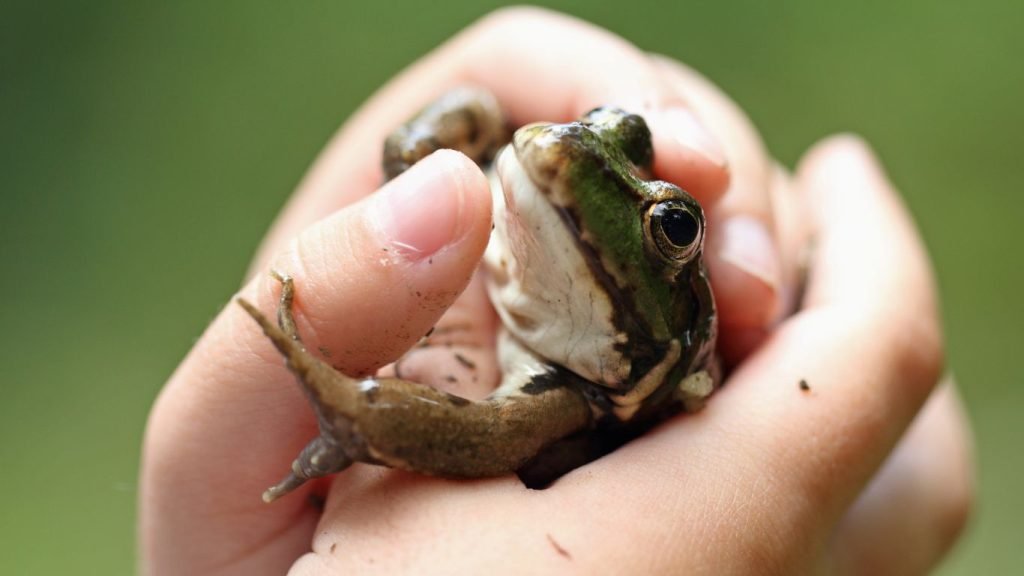
Feeding and Nutrition for Pet Frogs
Pet frogs have specific dietary requirements that are essential for their overall health and well-being. Understanding their nutritional needs is crucial to ensure a long and happy life for your amphibian friend.
Appropriate Diet for Frogs
As carnivorous animals, pet frogs primarily feed on live prey such as insects, worms, and small rodents. The specific diet may vary depending on the species, so it’s important to research the specific dietary requirements of your frog. Providing a species-appropriate diet is key to maintaining their health.
To ensure a balanced diet, you can offer a variety of live prey that mimics their natural diet in the wild. Some common live prey options for pet frogs include:
- Cricket
- Dubia roach
- Mealworm
- Waxworm
- Earthworm
Feeding your frog a diverse range of prey helps provide essential nutrients and prevents any nutritional deficiencies. It’s essential to source live prey from reputable suppliers to ensure they are disease-free and of high quality.
Feeding Live Prey to Frogs
When offering live prey to your pet frog, it’s important to ensure that the prey items are appropriately sized. Prey items should be no larger than the width of the frog’s mouth to prevent choking or digestive issues.
Some frog species may need live prey that moves in water, while others prefer prey that moves on land. It’s crucial to observe your frog during feeding to gauge their feeding habits and preferences.
Remember to remove any uneaten prey items from the enclosure within a reasonable time to maintain cleanliness and prevent contamination.
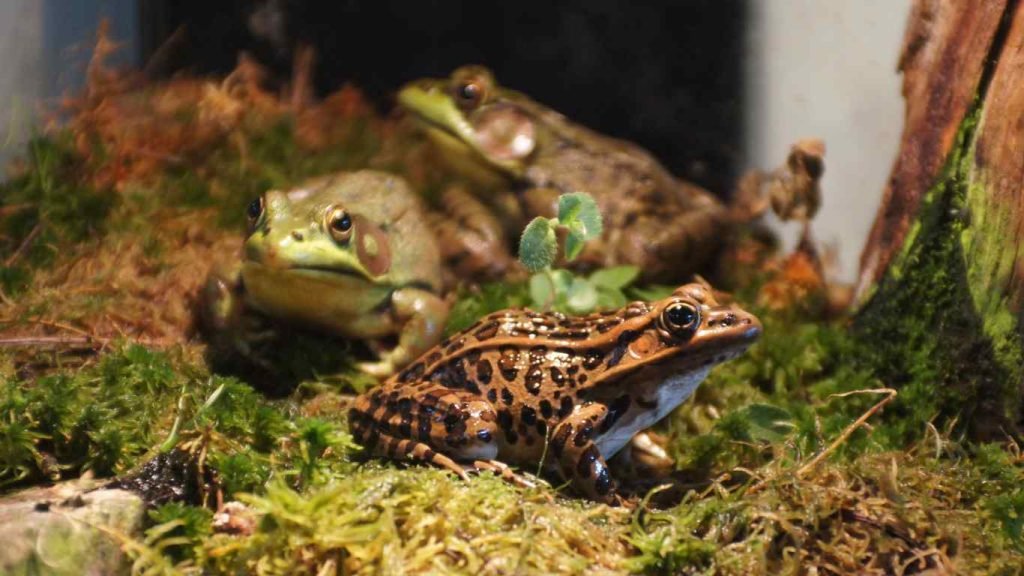
Water and Hydration
Alongside a proper diet, providing fresh and clean water is essential for your pet frog’s health. Place a shallow dish of dechlorinated water in the enclosure to ensure your frog can easily access it. It’s important to change the water regularly to prevent bacterial growth.
Your frog may also benefit from occasional misting to maintain proper humidity levels and aid in hydration. However, be sure not to oversaturate the habitat, as excessive moisture can lead to skin issues for some species.
Nutritional Needs of Pet Frogs
| Nutrient | Importance | Sources |
|---|---|---|
| Protein | Essential for growth, tissue repair, and overall health | Insects, worms, and small rodents |
| Calcium | Crucial for skeletal development and preventing metabolic bone disease | Calcium-rich insects (e.g., crickets with a calcium supplement) |
| Vitamins | Aids in various bodily functions and supports overall health | Gut-loaded insects or vitamin supplements |
| Water | Essential for hydration, digestion, and overall bodily functions | Provided through clean water sources |
It’s important to note that individual frog species may have specific dietary requirements. Consulting with a reptile or amphibian veterinarian is recommended to ensure your frog’s nutritional needs are met.

The Ideal Substrate for Your Pet Frog
Monitoring Health and Recognizing Illness in Pet Frogs
Pet frogs, like any other living creatures, can experience various health issues that may affect their well-being. It is important for frog owners to monitor their pet’s health closely and recognize signs of illness. By staying vigilant, you can ensure prompt medical attention and provide the necessary care for your beloved amphibian.
Common Frog Illnesses
There are several common illnesses that pet frogs may encounter. These include bacterial and fungal infections, viruses, parasites, metabolic bone disease, deficiencies, and trauma. It is crucial to be aware of these conditions to identify potential issues early on. By understanding the symptoms and seeking appropriate treatment, you can give your frog the best chance of recovery.
Here are some common signs of illness in frogs that you should watch out for:
- Difficulty moving or changes in mobility.
- Loss of appetite or significant weight loss.
- Unusual changes in color or appearance.
- Signs of injury or wounds that aren’t healing.
If you notice any of these signs or any other abnormalities in your pet frog, it is important to take action promptly to prevent further health complications.

Tip: Observing your frog’s behavior and appearance regularly is key to detecting signs of illness. Get to know your frog’s normal habits, appetite, and appearance to better identify changes.
Seeking Veterinary Care
When it comes to the health of your pet frog, it is imperative to seek professional veterinary care from a specialist who treats amphibians. A veterinarian experienced in handling amphibians will have the expertise to diagnose and treat frog illnesses effectively.
Regular check-ups are a proactive approach to maintaining your frog’s health. A veterinarian can provide an examination, run tests if necessary, and recommend appropriate treatment options.
Prevention is Key
While illness can occur even with the best care, there are preventative measures you can take to reduce the risk. Maintaining a clean and suitable habitat, providing a balanced diet, and ensuring proper hygiene can contribute to your frog’s overall health and well-being.
Remember, being a responsible pet owner means being proactive in maintaining your pet’s health. By monitoring their health closely and seeking professional care when necessary, you can help ensure a long, healthy, and happy life for your cherished pet frog.
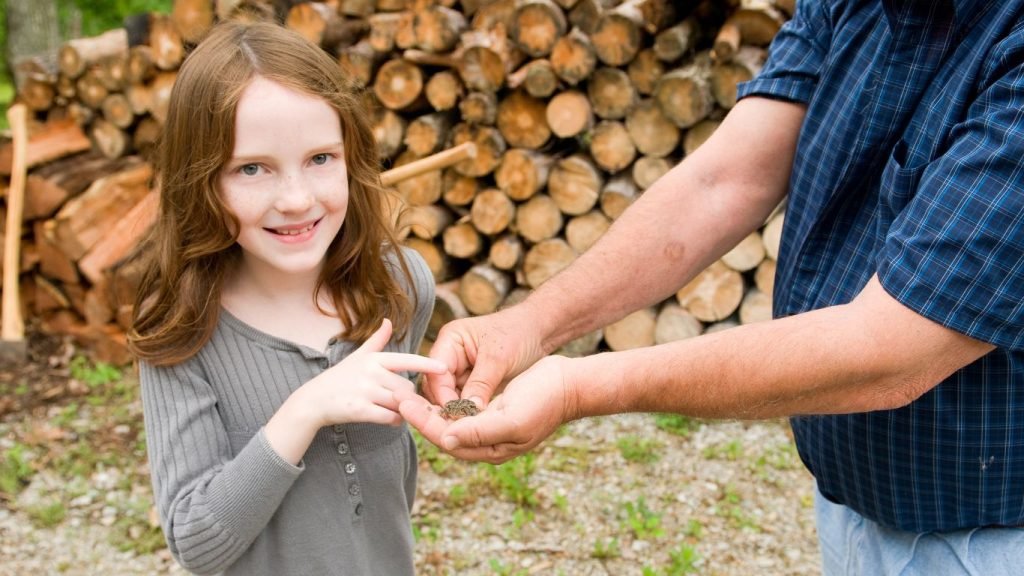
Choosing the Right Frog Species for Beginners
Not all frog species are suitable for beginners, as some may have specific care requirements or temperaments. When it comes to finding the best pet frog species for beginners, several options stand out as beginner-friendly, easy-to-care-for frogs that are suitable for those just starting their amphibian journey.
Dwarf Clawed Frogs
Dwarf Clawed Frogs (Hymenochirus spp.) are an excellent choice for beginners. These aquatic frogs are small in size, making them ideal for smaller tank setups. They are known for their peaceful nature, making them suitable for community tanks. Additionally, Dwarf Clawed Frogs have a relatively long lifespan, averaging around 10 years with proper care.
Oriental Fire-Bellied Toads
Oriental Fire-Bellied Toads (Bombina orientalis) are colorful and captivating frogs that make great pets for beginners. These semi-aquatic frogs are relatively easy to care for and have a lively personality. They thrive in both aquatic and terrestrial environments and can live up to 15 years under optimal conditions.
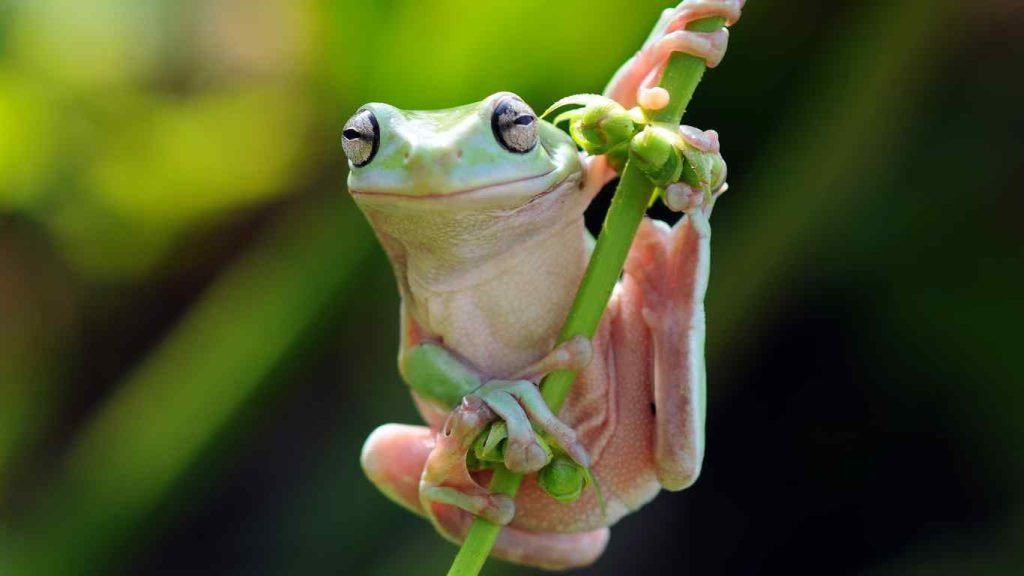
White’s Tree Frogs
White’s Tree Frogs (Litoria caerulea) are charming Australian tree-dwelling frogs that are popular among beginner frog enthusiasts. They have a docile temperament and are known for their adaptation to various environments. White’s Tree Frogs can live for over 20 years, making them a long-term companion for beginners.
African Clawed Frogs
African Clawed Frogs (Xenopus spp.) are robust and hardy frogs that are easy to care for, making them ideal for beginners. They are fully aquatic frogs that require a spacious tank and a proper feeding regimen. African Clawed Frogs can live for up to 15 years, providing years of companionship for their owners.
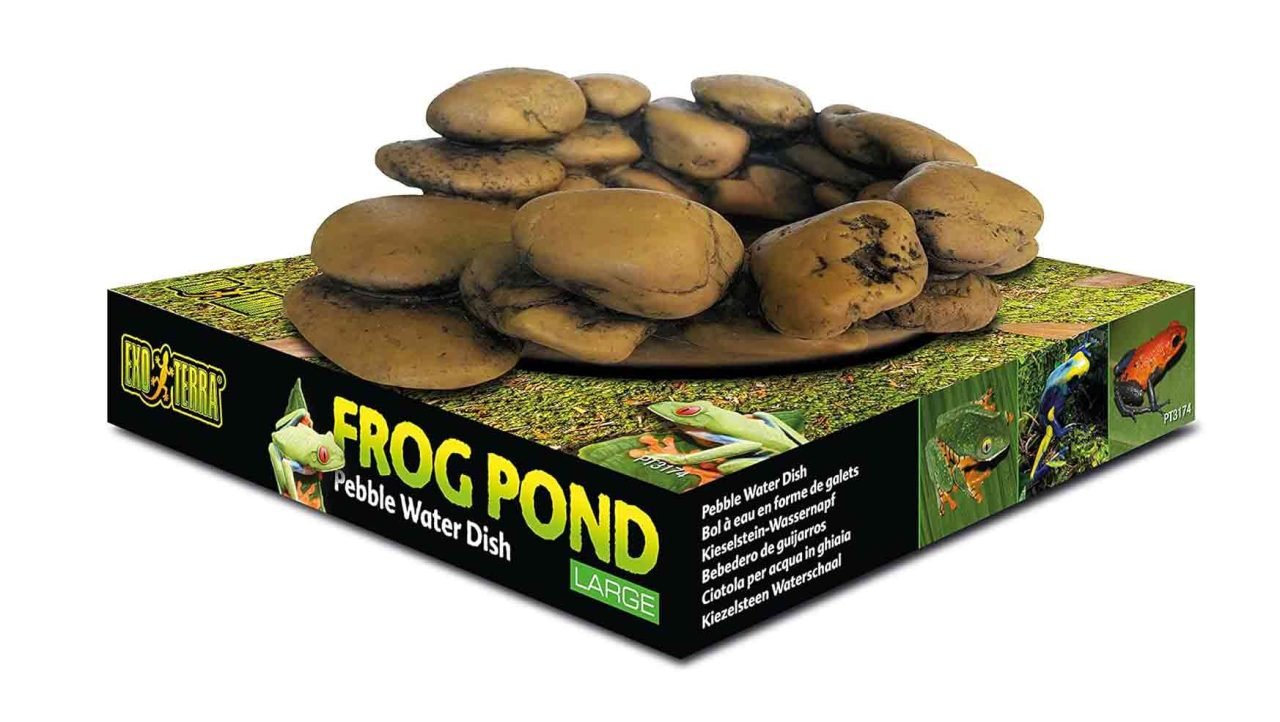
Natural Pebble-Rock Finished Frog Pond
American Green Tree Frogs
American Green Tree Frogs (Hyla cinerea) are charming and adaptable frogs commonly found in the United States. They are relatively low-maintenance and have a captivating call that adds to their appeal. Beginners can enjoy their vibrant colors and active nature while providing them with the necessary care for a lifespan of around 6-8 years.
Pacman Frogs
Pacman Frogs (Ceratophrys spp.) are unique and fascinating frogs known for their large, round mouths and stout bodies. These terrestrial frogs are relatively easy to care for and have a long lifespan of 10-15 years. Pacman Frogs’ striking appearance and low maintenance make them an attractive choice for beginner frog keepers.
When choosing a beginner-friendly pet frog, it is important to research and understand the specific care needs of the chosen species. Each frog species may have specific habitat requirements, feeding preferences, and temperature needs. By choosing a suitable frog species and providing the necessary care, beginners can confidently embark on their journey into the world of pet frogs.
Legal Considerations and Wildlife Conservation
When it comes to keeping pet frogs, it’s important to be aware of the legal considerations and wildlife conservation efforts surrounding these amphibians. In certain countries, such as Australia, frogs are protected species, and keeping them as pets may require a license. To ensure responsible ownership and contribute to the conservation of amphibians, it’s crucial to comply with the laws and regulations in your area.

Releasing pet frogs into the wild can have detrimental effects on ecosystems and native populations. If you no longer want to keep your frog, it’s essential to find alternative homes or consider humane solutions. By taking these steps, you can play a role in preserving the delicate balance of our natural environments.
“Responsible ownership and compliance with wildlife protection laws are essential for the conservation of amphibians and their habitats.”
Understanding the legality of keeping pet frogs is not only important for your own compliance but also for the overall well-being of these incredible creatures and the preservation of their natural habitats.
Legality of Keeping Pet Frogs
Depending on your location, the legality of keeping pet frogs may vary. For example, in countries like Australia, certain frog species are protected, and keeping them without the necessary permits or licenses is illegal. It’s crucial to familiarize yourself with the specific laws and regulations in your area to avoid unintentional violations and contribute to wildlife conservation.
Licenses for Pet Frogs
If you’re considering keeping specific frog species as pets, it’s important to research whether you need a license or permit to do so. Some countries and states require permits for keeping certain exotic or endangered frog species. These licenses are designed to regulate and monitor the ownership of these species, ensuring their welfare and contributing to conservation efforts.
Wildlife Protection Laws
Wildlife protection laws are put in place to safeguard vulnerable species and their natural habitats. These laws may include regulations on the capture, trade, and ownership of certain frog species. By adhering to these laws, you can help protect the biodiversity of our ecosystems and prevent the illegal exploitation of endangered amphibians.
Conservation of Amphibians
Amphibians, including frogs, play a crucial role in maintaining the balance of ecosystems. They serve as indicators of environmental health and contribute to insect control and nutrient cycling. Conserving amphibians is vital for the overall health of our planet and the preservation of biodiversity. By understanding the legal considerations and supporting wildlife protection efforts, you can play a part in the conservation of these fascinating creatures.

Pet Frogs as Educational and Low-Maintenance Pets
Owning a pet frog can be a rewarding and educational experience, especially for children. These fascinating amphibians offer a unique opportunity to observe their captivating life cycle, from eggs to tadpoles to fully grown frogs. Kids can witness firsthand the wonders of nature and gain a deeper understanding of the natural world.
Having a pet frog also teaches kids about responsibility and the importance of caring for living creatures. They learn the value of providing a suitable habitat, feeding them a proper diet, and ensuring their overall well-being. Taking care of a pet frog instills important life skills and nurtures a sense of empathy and compassion.
Frogs are also an excellent choice for those seeking low-maintenance pets. Compared to cats or dogs, they require less attention and exercise. Frogs are independent animals that do not need daily walks or constant social interaction. This makes them a practical option for individuals or families with busy schedules or limited space.

However, it’s important to note that even low-maintenance pets like frogs still require proper care and attention. They have specific environmental needs, such as the right temperature, humidity, and lighting conditions. Regular monitoring of their health and ensuring a clean and comfortable living space is essential for their well-being.
Overall, pet frogs offer a wealth of educational benefits and make great low-maintenance companions. They provide a unique opportunity for children to learn about the natural world, responsibility, and empathy. If you’re looking for a pet that combines educational value with ease of care, a frog might be the perfect choice for you and your family.
A Table Comparing Educational Benefits and Maintenance of Different Pets
| Pet | Educational Benefits | Maintenance Level |
|---|---|---|
| Dogs | Teaches responsibility, empathy, and social skills | High – Regular exercise, grooming, and training |
| Cats | Observing behavior, learning about independence | Medium – Litter box maintenance, occasional grooming |
| Hamsters | Learning about pet care, responsibility, and nurturing | Low – Regular cage cleaning, feeding, and exercise |
| Frogs | Observing the life cycle, learning about habitats and ecosystems | Low – Minimal interaction, proper habitat setup |
As shown in the table above, frogs offer unique educational benefits while requiring less maintenance compared to other popular pets. Their fascinating life cycle and low-maintenance nature make them an ideal choice for families looking to introduce their children to the wonders of the natural world.
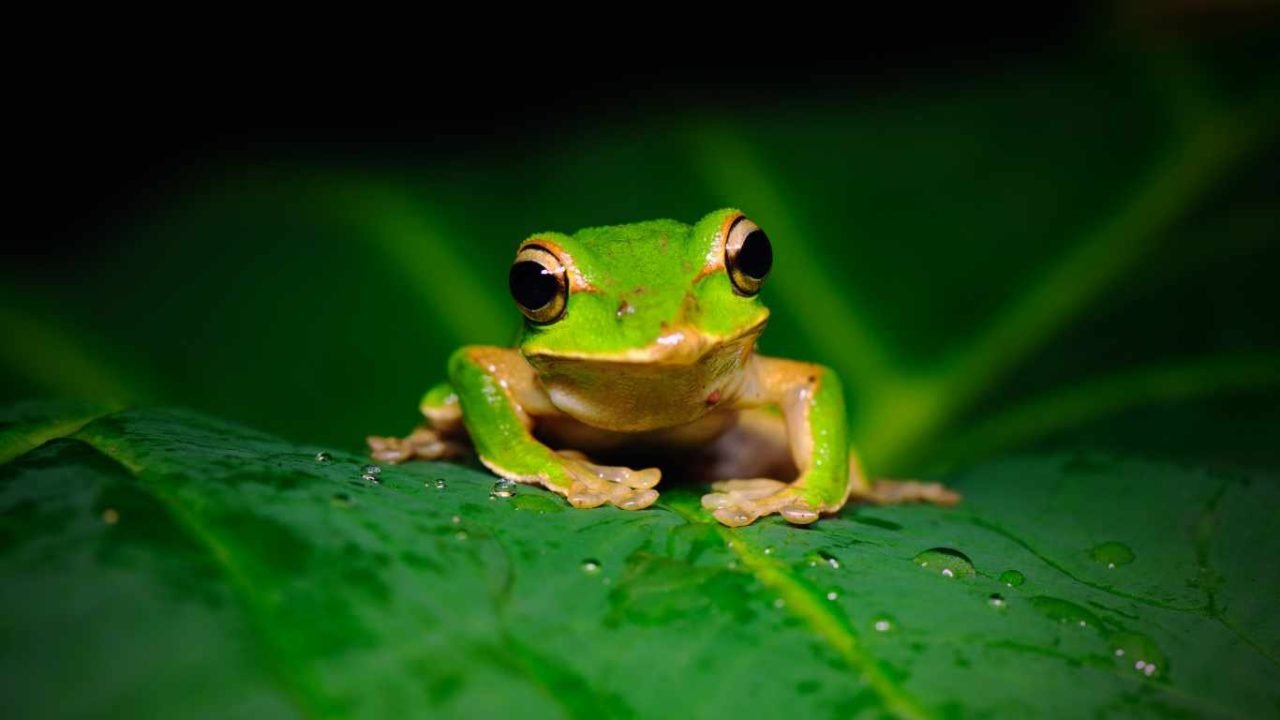
Join Our GeoZoo Family
Subscribe to our Newsletter
Jumping to the End: Final Thoughts
Understanding the lifespan of pet frogs, such as “How Long Do Pet Frogs Live,” and providing proper care are crucial for responsible frog ownership. By creating the ideal habitat, offering the right nutrition, monitoring their health, and selecting suitable species, you can ensure your pet frog lives a fulfilling life. Supporting local breeders and avoiding the capture of wild frogs not only contributes to responsible ownership but also helps conserve frog populations and their ecosystems.
Owning a pet frog can be a rewarding experience, offering educational opportunities and teaching responsibility to both kids and adults. You can observe the captivating life cycle of amphibians and gain a deeper appreciation for nature. Remember, although frogs are relatively low-maintenance pets, they still require the necessary care, attention, and commitment to thrive. “How Long Do Pet Frogs Live” is a common question among frog enthusiasts, and by understanding the lifespan of your specific frog species, you can tailor your care routine accordingly.
By following these pet frog care tips, including considerations for “How Long Do Pet Frogs Live,” you can enjoy a long and meaningful relationship with your frog companion. The joy of responsible frog ownership lies in providing a suitable home, proper nutrition, and regular health monitoring. So, take the necessary steps to ensure the well-being of your pet frog and embark on this fascinating journey.
FREQUENTLY ASKED QUESTIONS
How long do pet frogs live?
Pet frogs can live for varying lengths of time depending on the species and proper care. On average, pet frogs live between 4 to 15 years, although some can live even longer.
Why is it important to buy captive-bred frogs?
When purchasing a pet frog, it is crucial to only buy frogs that are guaranteed to be captive-bred and disease-free. Captive-bred frogs ensure the conservation of wild populations and reduce the risk of introducing diseases into the ecosystem.
How should I set up a habitat for my pet frog?
Setting up an appropriate habitat is essential for the well-being of your pet frog. The tank should be suitable for the specific species, with the right temperature, humidity, lighting, and substrate. It is crucial to keep the frog’s enclosure clean to prevent the buildup of contaminants and waste.
What should I feed my pet frog?
Pet frogs are carnivores and primarily eat live prey such as insects, worms, and small rodents. It is important to provide a species-appropriate diet and avoid feeding them human foods. Fresh and clean water should always be available to the frog.
How can I monitor the health of my pet frog?
Pet frogs can experience various health issues. It is important to observe the frog regularly for any changes in appearance or behavior that may indicate illness. If there are any concerns, it is advisable to seek professional veterinary care from a specialist who treats amphibians.
What are some beginner-friendly frog species?
Recommended frog species for beginners include Dwarf Clawed Frogs, Oriental Fire-Bellied Toads, White’s Tree Frogs, African Clawed Frogs, American Green Tree Frogs, and Pacman Frogs. These species are relatively easy to care for and are commonly found in the pet trade.
Are there legal considerations for keeping pet frogs?
Keeping pet frogs may have legal considerations, especially in countries like Australia, where frogs are protected species. It is important to comply with the laws and regulations in your area to ensure responsible ownership and conservation of amphibians.
What educational benefits do pet frogs provide?
Pet frogs can provide educational benefits, especially for children. They offer an opportunity to observe the fascinating life cycle of amphibians and teach kids about responsibility and caring for living creatures. Frogs are relatively low-maintenance pets, requiring less attention compared to cats or dogs.
What is the conclusion for pet frog lifespan and care?
Understanding the lifespan of pet frogs and providing proper care are crucial for responsible frog ownership. With the right habitat setup, nutrition, monitoring of health, and suitable species selection, pet frogs can live fulfilling lives. Owning a pet frog can be a rewarding experience, offering educational opportunities and teaching responsibility to both kids and adults.

